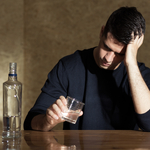The American opioid addiction epidemic has long been a top priority among lawmakers and health experts. The scourge of opioid abuse across the country has resulted in thousands of premature deaths, the result of overdoses. If you have been keeping yourself apprised of efforts to curb opioid use and abuse rates, it is likely that you have heard or read statements indicating that the opioid epidemic is unprecedented.
A claim that is spot on when it comes to the abuse of drugs. What makes opioid abuse so pernicious is the fact that technically, someone can overdose at any time. People often say that addiction is a slow death, dying spiritually at first and then expiring physically down the road—often decades later. Not so with opioid use disorder. But, if we were to step back and look at addiction in America as a whole, one could easily argue that the most severe addiction epidemic that the U.S. has ever faced and continues to struggle with is tied to a substance that is legal for adult consumption. Alcohol is a drug that is responsible for far more deaths every year than opioid narcotics, such as OxyContin or heroin. However, opioid addiction receives far more attention than AUD.
Alcohol, like prescription drugs, is a multibillion dollar enterprise. Despite the deadly nature of heavy alcohol use, the substance is both legal and is considered to be a socially acceptable for both relaxation and celebration. The substance can be acquired with little effort, there are no rules about how much can be purchased or used at one time. Suffice it to say, one can drink themselves to death without out any checks and balances. Unlike a doctor who may stop prescribing a drug because of concerns of abuse, liquor stores will sell booze to anyone with a pulse.
Alcohol Abuse Figures of Interest
A few years ago a National Epidemiologic Survey on Alcohol and Related Conditions (NESARC) revealed that over 20 million Americans consumed alcohol at potentially dangerous levels. The data was analyzed by author Philip J. Cook, and used for a book titled, “Paying the Tab: The Costs and Benefits of Alcohol Control.” NESARC data revealed that 24 million adults (18 +) – drink an average 74 alcoholic beverages every week—about 10 drinks a day. A lot of alcohol to be sure.
In the following year, the National Survey on Drug Use and Health (NSDUH) showed that 26.9 percent of people ages 18 or older reported that they engaged in binge drinking in the past month. What’s more, the survey indicated that 15.1 million adults had an alcohol use disorder (AUD), a figure made up of 9.8 million men and 5.3 million women. While those figures are staggering, perhaps the most concerning finding was that about 1.3 million adults received treatment for AUD at a substance use disorder center in the same year.
Alcohol and Opioids—A Common Tie
If one were to try and find a silver lining regarding the American opioid addiction epidemic, you may think that it would be a difficult task considering the death toll. However, the crisis has brought to light the fact that there is a real lack of addiction treatment services in this country. A reality that brought about the passing of legislation that would, among other things, expand access to addiction treatment.
Substance use disorder treatment centers utilize effective science-based therapies to help people save their own lives. In conjunction with medication and introducing patients to recovery support groups (i.e. 12-Step programs and SMART Recovery), people with the disease of addiction can have a real chance at sustained abstinence for decades. Many facilities have started to take advantage of certain medications that can help clients after being discharged avoid relapse. One such drug is naltrexone, commonly sold under the brand name Vivitrol ® has been used for years on opioid addicts.
Naltrexone has been found to have an impact on opioid cravings, it can deter relapse by blocking the euphoric feelings produced by opioid use. One can take an OxyContin, but not get high. Interestingly, science shows that both opioids and alcohol impact some of the same receptors in the brain. So, it stands to reason that naltrexone may help alcoholics curb their drinking. Studies indicate that Vivitrol can decrease the pleasure that comes with drinking alcohol, NPR reports. If you reconsider the survey that showed only a small fraction of alcoholics go to treatment, it is vital that primary care physicians utilize the drug which research shows has been historically underused.
Alcohol Use Disorder Treatment
If you are one of the millions of Americans who has an unhealthy relationship with alcohol, we implore you to seek help immediately. The problem, as with any addiction, it will only get worse. Alcohol use disorder is a progressive disease, without treatment it can be fatal. Please contact PACE Recovery Center to begin the journey of recovery. We specialize in treating young adult males, and have helped many people start the journey of recovery. Here’s to life!



